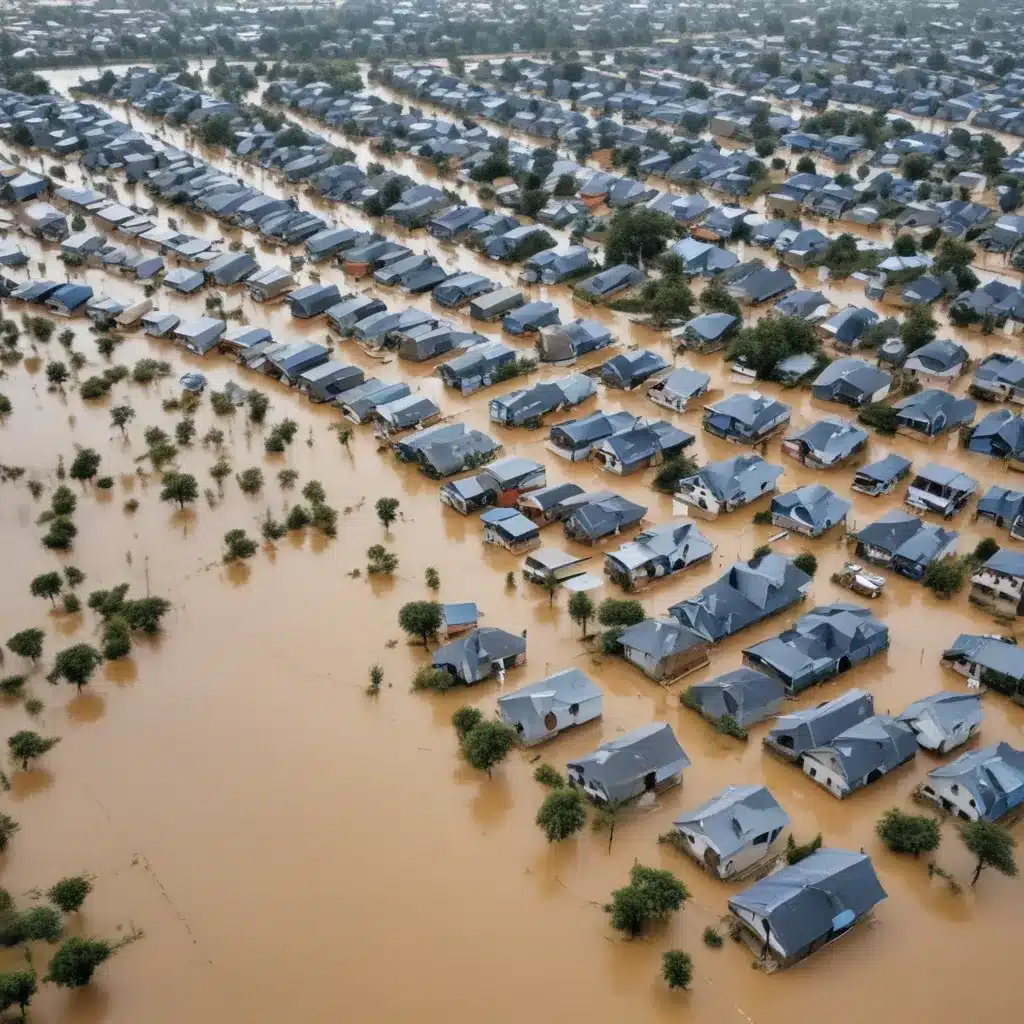
Flood events have become increasingly devastating in recent years, with climate change and urbanisation amplifying their impact worldwide. Effective flood risk management is therefore crucial to safeguard communities, infrastructure, and economies. While traditional approaches have focused on centralized, top-down solutions, the emergence of blockchain technology offers new opportunities to decentralize and enhance flood preparedness, response, and recovery efforts.
Now, this might seem counterintuitive…
Flood Risk Assessment
Accurate flood risk assessment forms the foundation of any robust flood management strategy. This process involves a detailed analysis of hydrological data, flood probabilities, and community vulnerabilities. Hydrological modeling techniques leverage historical precipitation, streamflow, and terrain data to predict flood extents and depths under different scenarios. Flood probability analysis then quantifies the likelihood of events occurring, accounting for factors such as climate variability and infrastructure changes. Vulnerability assessments examine the exposure and sensitivity of people, assets, and critical services to the projected flood impacts.
Blockchain can revolutionize this risk assessment process by enhancing data transparency, accessibility, and traceability. A decentralized flood risk registry, underpinned by blockchain, can aggregate hydrological observations, vulnerability metrics, and historical flood records from diverse sources, including government agencies, research institutions, and citizen science initiatives. Smart contracts can automatically verify the integrity of this data, ensuring it is tamper-proof and continuously updated. Communities and stakeholders can then access this comprehensive, real-time flood risk information through secure, permission-based queries, empowering evidence-based decision-making.
Flood Control Infrastructure
Structural flood control measures, such as levees, floodwalls, and detention basins, play a crucial role in mitigating the impacts of high-magnitude events. Blockchain can enhance the design, construction, and maintenance of these vital assets.
Levee Design and Construction: Blockchain-based Building Information Modeling (BIM) can streamline the design, engineering, and permitting processes for levee projects. Smart contracts can automatically validate design parameters, monitor construction progress, and trigger milestone-based payments, enhancing transparency and accountability. Additionally, a decentralized asset registry can track the ownership, maintenance histories, and compliance records of levees, enabling efficient long-term management.
Floodwall Monitoring: Sensor-equipped floodwalls can report their structural integrity, water levels, and maintenance status in real-time to a blockchain network. This distributed data stream can trigger automated notifications, activate backup systems, and initiate emergency procedures, improving operational resilience.
Detention Basin Management: Blockchain-powered IoT devices can monitor the fill levels, release rates, and sediment buildup in detention basins, optimizing storage capacity and triggering preemptive maintenance. Smart contracts can also automate the disbursement of funds for basin upkeep, drawing from a decentralized insurance pool or government budgets.
Stormwater Management
Effective stormwater management is crucial for urban flood mitigation, encompassing both grey infrastructure (e.g., drainage pipes, culverts) and green infrastructure (e.g., bioswales, permeable pavements). Blockchain can enhance the planning, implementation, and maintenance of these systems.
Urban Drainage Networks: A blockchain-based registry can maintain robust, tamper-proof records of the location, capacity, and condition of drainage assets. This transparent data can inform proactive maintenance, identify bottlenecks, and optimize system performance during extreme rainfall events.
Green Infrastructure Monitoring: IoT sensors can track the water retention, filtration, and infiltration performance of green infrastructure, such as rain gardens and constructed wetlands. Smart contracts can then automate maintenance schedules, trigger cleaning procedures, and reward property owners for the effective management of these distributed stormwater assets.
Detention Basin Design: Blockchain can facilitate the collaborative design of detention basins by enabling secure data sharing, version control, and automated cost accounting among engineers, planners, and community stakeholders. Smart contracts can also manage the equitable distribution of maintenance responsibilities and funding across multiple jurisdictions.
Emergency Preparedness and Response
Blockchain can revolutionize flood emergency preparedness and response by enhancing early warning systems, evacuation planning, and disaster recovery efforts.
Early Warning Systems: A decentralized early warning network, powered by blockchain, can aggregate real-time data from hydrological sensors, weather forecasts, and community reports. Smart contracts can then automatically trigger alerts, activate backup systems, and mobilize emergency resources based on predetermined risk thresholds, ensuring rapid, coordinated response.
Evacuation Planning: Blockchain can facilitate the secure, transparent coordination of evacuation routes, shelter locations, and transportation resources. Smart contracts can manage the automated allocation of buses, boats, and other emergency vehicles, while a decentralized identity system can streamline the registration and tracking of evacuees.
Damage Assessment and Recovery: Post-flood damage assessments can be recorded on the blockchain, creating a permanent, tamper-proof record of impacted assets, relief aid distribution, and recovery progress. Smart contracts can then automate the disbursement of insurance payouts, government subsidies, and crowdfunded donations based on verified damage reports, ensuring equitable and efficient recovery.
Governance and Policies
Effective flood risk management requires robust governance frameworks and policy instruments. Blockchain can enhance transparency, accountability, and stakeholder collaboration in this domain.
Flood Risk Regulation: Blockchain-based land registries can track property-level flood risks, building codes, and insurance policies, empowering policymakers to design targeted mitigation strategies and enforce compliance. Smart contracts can also automate the administration of flood-related permits, zoning regulations, and infrastructure upgrades.
Stakeholder Collaboration: A decentralized governance model, facilitated by blockchain-powered Decentralized Autonomous Organizations (DAOs), can foster greater collaboration among government agencies, private sector entities, and community groups. Transparent decision-making, equitable resource allocation, and automated conflict resolution can enhance the coordination of flood risk management efforts across jurisdictions.
Flood Insurance Innovation: Blockchain can revolutionize the flood insurance industry by enabling peer-to-peer risk pooling, parametric payouts, and automated claims processing. Smart contracts can automatically trigger payouts based on predetermined flood thresholds, reducing bureaucratic delays and enhancing the resilience of communities.
The integration of blockchain technology into flood risk management offers a promising path forward, empowering decentralized, transparent, and adaptive solutions to address the growing threat of flooding. By leveraging the unique capabilities of distributed ledgers, smart contracts, and IoT devices, flood control specialists can enhance data integrity, stakeholder collaboration, and operational efficiency – ultimately building more resilient communities capable of withstanding the impacts of extreme weather events.
To learn more about how blockchain can transform your flood risk management strategies, visit Flood Control 2015.
Tip: Implement real-time monitoring to swiftly respond to flood risks















